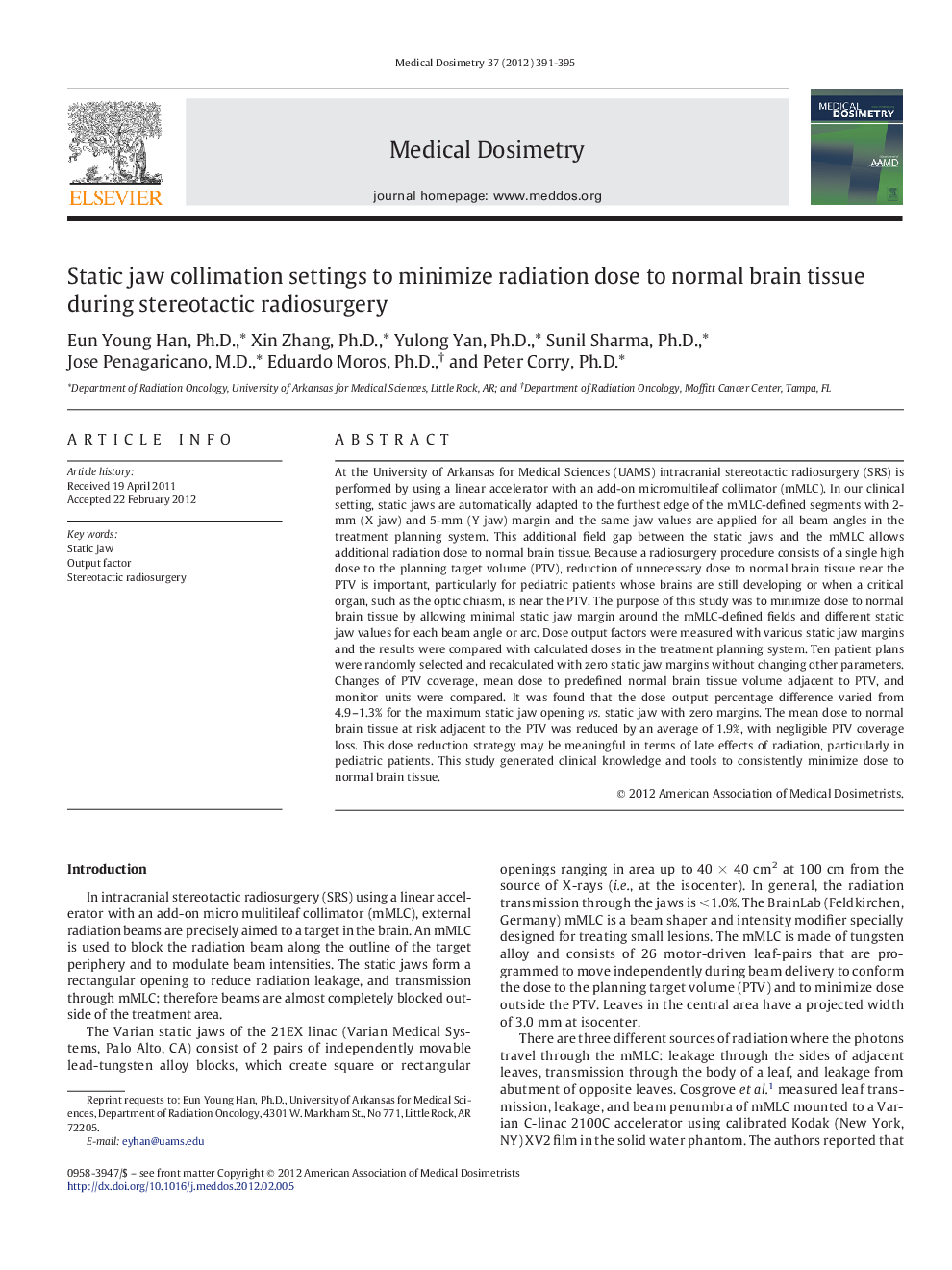| Article ID | Journal | Published Year | Pages | File Type |
|---|---|---|---|---|
| 1882030 | Medical Dosimetry | 2012 | 5 Pages |
Abstract
At the University of Arkansas for Medical Sciences (UAMS) intracranial stereotactic radiosurgery (SRS) is performed by using a linear accelerator with an add-on micromultileaf collimator (mMLC). In our clinical setting, static jaws are automatically adapted to the furthest edge of the mMLC-defined segments with 2-mm (X jaw) and 5-mm (Y jaw) margin and the same jaw values are applied for all beam angles in the treatment planning system. This additional field gap between the static jaws and the mMLC allows additional radiation dose to normal brain tissue. Because a radiosurgery procedure consists of a single high dose to the planning target volume (PTV), reduction of unnecessary dose to normal brain tissue near the PTV is important, particularly for pediatric patients whose brains are still developing or when a critical organ, such as the optic chiasm, is near the PTV. The purpose of this study was to minimize dose to normal brain tissue by allowing minimal static jaw margin around the mMLC-defined fields and different static jaw values for each beam angle or arc. Dose output factors were measured with various static jaw margins and the results were compared with calculated doses in the treatment planning system. Ten patient plans were randomly selected and recalculated with zero static jaw margins without changing other parameters. Changes of PTV coverage, mean dose to predefined normal brain tissue volume adjacent to PTV, and monitor units were compared. It was found that the dose output percentage difference varied from 4.9-1.3% for the maximum static jaw opening vs. static jaw with zero margins. The mean dose to normal brain tissue at risk adjacent to the PTV was reduced by an average of 1.9%, with negligible PTV coverage loss. This dose reduction strategy may be meaningful in terms of late effects of radiation, particularly in pediatric patients. This study generated clinical knowledge and tools to consistently minimize dose to normal brain tissue.
Related Topics
Physical Sciences and Engineering
Physics and Astronomy
Radiation
Authors
Eun Young Ph.D., Xin Ph.D., Yulong Ph.D., Sunil Ph.D., Jose M.D., Eduardo Ph.D., Peter Ph.D.,
